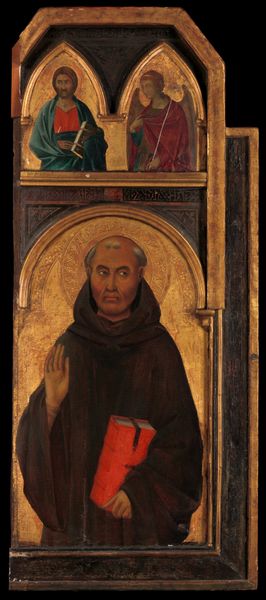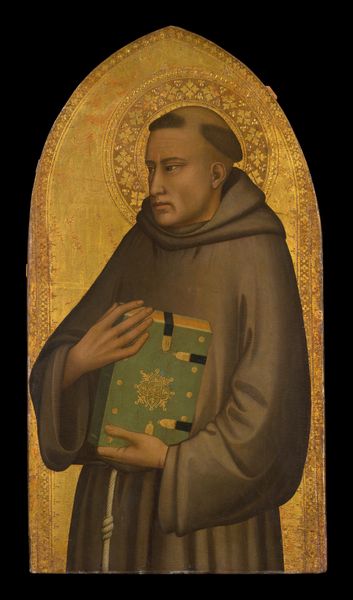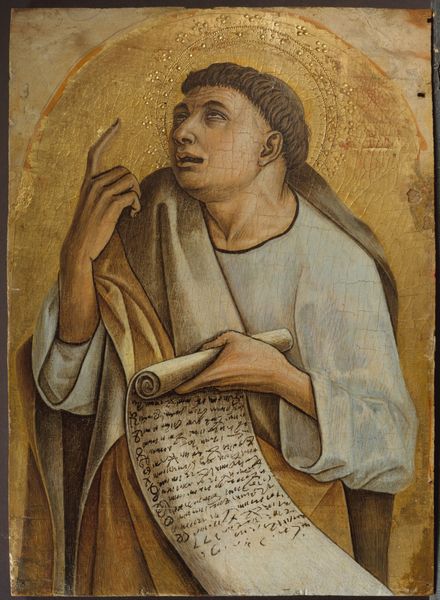
tempera, painting
#
portrait
#
medieval
#
tempera
#
painting
#
figuration
#
oil painting
#
men
#
early-renaissance
#
portrait art
Dimensions: Overall: 7 in. × 4 1/8 in. (17.8 × 10.5 cm)
Copyright: Public Domain
Editor: This is Sano di Pietro's "Saint Bernardino," a tempera on wood panel painted sometime between 1457 and 1473. It strikes me as a very formal, almost iconic representation. The saint’s gaze is averted, and he presents this beautiful, elaborately decorated book. What can you tell me about this work's place in history? Curator: Well, understanding this painting requires delving into the political and religious landscape of 15th-century Italy. Bernardino of Siena was a hugely influential Franciscan friar known for his powerful preaching and devotion to the Holy Name of Jesus, represented by the "IHS" on the tablet he holds. That image was promoted by Bernardino himself, becoming widespread throughout Italy as a response to factionalism and social strife. Editor: So, the image itself was almost a political tool? Curator: Precisely. Think about how images of saints were disseminated at this time, largely by the Church. Sano di Pietro was working within a system of patronage and religious messaging. His *Saint Bernardino* doesn’t just depict a holy man; it promotes a particular message of piety and communal identity. Who do you think the intended audience would be for a piece like this? Editor: I imagine this would hang in a church or some other place accessible to the public. Therefore, ordinary people could witness Saint Bernardino holding up his scripture, promoting devotion and solidifying the Church’s power. Curator: Exactly. It highlights the role art played in shaping public perception and reinforcing religious authority. Editor: I hadn't considered that! Looking at it now, it seems less like a simple portrait and more like a statement about the social role of the church and power. Thanks for helping me see this work in its full context. Curator: My pleasure. It is through these subtle explorations of artworks and history that one comes to fully appreciate the value of both art and analysis.
Comments
No comments
Be the first to comment and join the conversation on the ultimate creative platform.













